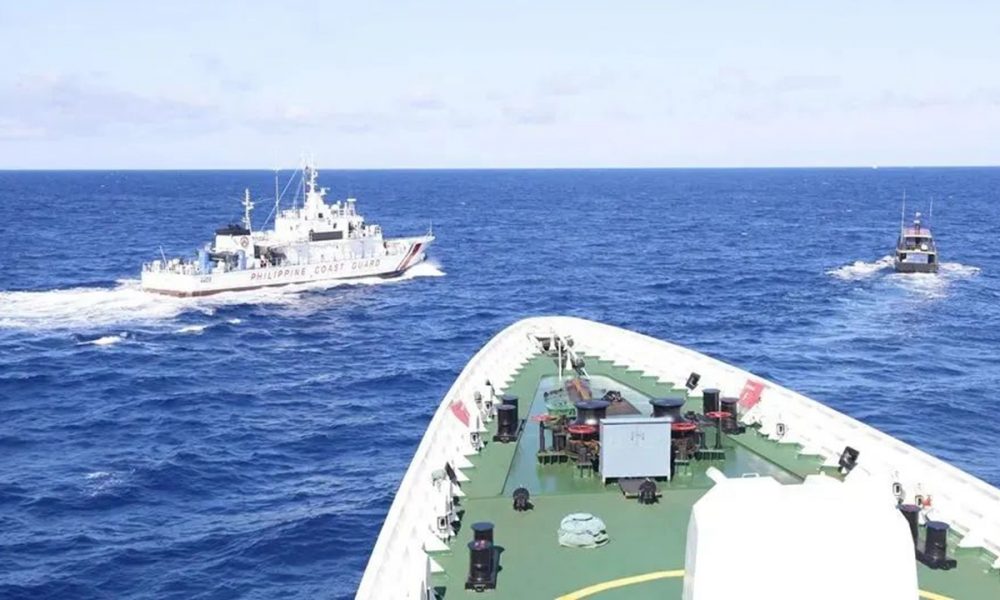Asia
US seeks to encircle China from the east with a ‘sea wall’: Rear Admiral Sevim

Tensions continue to escalate in the South China Sea, triggered by the recent standoff between China and the Philippines over a disputed submerged reef. Alongside ongoing military exercises involving Australia, the Philippines and the US, there will be also another joint naval drill off the coast of the Philippines this week between the US, Japan, and Australia. Retired Rear Admiral Alaettin Sevim analyzes these developments as integral components of the broader US and Western strategy to “containment China from the east”.
In early August, a Chinese coast guard vessel deployed water cannons to obstruct a Philippine government boat attempting to deliver supplies to troops stationed on the Second Thomas Shoal.
While minor flare-ups between China and the Philippines are not uncommon, the recent incident took on significance due to the involvement of the US. This was further highlighted by the subsequent statements from US Defense Secretary Lloyd Austin, who pledged to defend Philippine vessels in the South China Sea, and Admiral Samuel Paparo, commander of the US Indo-Pacific fleet, who expressed readiness to assist Manila if China interfered with resupply efforts at the Second Thomas Shoal.
It’s important to note that the US and the Philippines have an augmented mutual defense treaty in place. Despite China’s opposition, Manila is poised to persist with similar resupply missions, escorted by both the coast guard and, reportedly, even US assets, as speculation suggests.
Furthermore, Manila intends to initiate joint patrols with the US later this year, with the inaugural operation possibly focusing on the Second Thomas Shoal.
Stranded US Warship
In 1999, the Philippine navy intentionally grounded the US-built warship BRP Sierra Madre on a reef, using it as a strategic position to monitor China’s activities in the region.
Legal proceedings were initiated by the Philippines in January 2013 under the United Nations Convention on the Law of the Sea (UNCLOS) to challenge China’s territorial claims in the South China Sea. On July 12, 2016, an international arbitration panel declared that the Second Thomas Shoal, situated in the Spratly Islands, falls within the Philippines’ continental shelf and its exclusive economic zone. China rejected this ruling from The Hague and declined to comply.
China maintains that its actions are in line with international law and accuses the United States of stoking discord in the South China Sea rather than promoting diplomatic solutions.
According to Chinese Foreign Ministry spokesperson Wang Wenbin, the US is responsible for encouraging and supporting certain countries’ violations of maritime rights, fostering division among regional nations, and thus destabilizing the regional order.
“The Underlying Agenda”
In an exclusive interview with Harici, retired Rear Admiral Dr. Alaettin Sevim stated, “The US is systematically working to contain China from the east with a sea wall.”
Sevim elaborated, “The US is establishing a continuous arc spanning from the Bering Strait to New Zealand, effectively encircling China from the eastern maritime front.”
“This zone encompasses disputed territories, especially around the South China Sea’s Spratly Islands. Multiple parties, including the Philippines, Vietnam, and Taiwan, assert their claims within this region. The UN Tribunal on the Law of the Sea previously ruled against China in a dispute involving the Philippines. Despite the ruling, China remains steadfast in its refusal to acknowledge it, insisting on bilateral negotiations. Hence, debates regarding maritime sovereignty in this area will persist.”
India’s Disengagement
Sevim argued that the US aims to demonstrate the resilience of its maritime barrier and augment the forces supporting it. He pointed to the ongoing joint exercises involving the USA, Japan, and Australia in the region. He also highlighted the increased US military presence in the Philippines, which he interpreted as facets of the broader US and Western strategy to “strengthen the eastern perimeter” against China.
Sevim noted that the US seeks to extend this strategy to the oceans through initiatives like AUKUS and QUAD. He mentioned that, so far, India has not been convinced to participate, which has prevented the West from achieving similar control in the Indian Ocean.
While Sevim did not foresee these efforts escalating into armed conflict, he anticipated that tensions would persist.